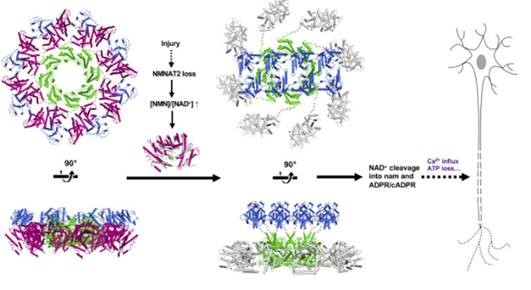The challenge of neurodegenerative diseases
In the context of an aging population, neurodegenerative conditions such as Parkinson´s disease or Alzheimer´s disease have become a major health problem in Western countries.
The global market size for neurodegenerative diseases drugs was estimated at USD 35 billion in 2018 and is projected to reach USD 63 billion by the end of 2026, exhibiting a CAGR of 7.2% (source: Fortune Business Insights).
Developing treatments for neurodegenerative diseases comes with a number of challenges: The underlying causes, diseases mechanisms and progression of disorders affecting the central nervous system have not yet been fully understood. This results in much higher drug failure rates as compared to other fields, making the development of novel therapeutics for neurodegenerative disease very time and cost intensive. Approved drugs only offer short-term improvement of the patients’ symptoms, so there is a huge unmet medical need for innovative therapies that slow down or ideally revert disease progression.
New treatment approaches urgently needed
In response to the high attrition rates, R&D efforts to unveil the mechanism of neurodegenerative diseases have gained increasing attention. Evotec has a strong commitment to developing novel therapeutic options in neurodegeneration for more than a decade. In our long-standing collaboration with Celgene (now Bristol Myers Squibb) we have set out to establish human induced pluripotent stem cell-based disease models to discover novel disease-modifying treatments for a broad range of neurodegenerative diseases.
What are induced pluripotent stem cells?
Induced pluripotent stem cells (also known as iPS cells or iPSCs) are a type of pluripotent stem cell that can be generated directly from the patient’s somatic cells through reprogramming. They can be propagated indefinitely and give rise to almost every cell type in the body (such as neurons, heart, pancreatic and liver cells) thereby presenting unprecedented opportunities to model human disease pathology.
Over the past decade, Evotec has built an industrialised iPSC infrastructure that represents one of the largest and most sophisticated iPSC platforms in the industry. It comprises multiple different cell types to investigate disease-relevant phenotypes, translatable biomarkers and therapeutic targets. Evotec’s iPSC platform has continuously been optimized for increased throughput, reproducibility and robustness to provide large-scale cultures of iPSC derived cells for disease modeling, drug discovery and cell therapy. Moreover, it is closely connected with our PanOmics and PanHunter platforms to determine molecular disease signatures that may aid in stratification of patients and clinical trial success.
Evotec’s iPSC platform has been developed in collaboration with top-tier academic and industrial partners such as the CHDI Foundation, the Harvard Stem Cell Institute, Centogene, CENSO Biotechnologies (now Axol Bioscience), Fraunhofer IME-SP, Reprocell, Pancella, the University of Tübingen – and more recently - Sartorius and Curexsys. The Company´s goal is to build a proprietary pipeline of first-in-class therapeutic agents for a broad range of different diseases with high medical need, including neurodegenerative disorders, to ultimately extend and improve the lives of millions of patients and their families worldwide.
READ ABOUT OUR IPSC CAPABILITIES
READ ABOUT OUR BMS COLLABORATION

